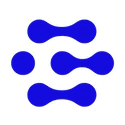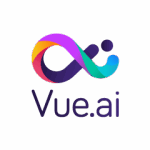What Is Visual Search Software?
Visual search software is a cutting-edge technology that enables users to search for information using images rather than standard text-based queries. This unique software employs computer vision and deep learning algorithms to analyse an image's traits and qualities and return similar or comparable results. One of the primary advantages of visual search software is its ability to produce accurate and relevant results, even in situations where traditional text-based search may be ineffective.
This is especially handy for e-commerce websites, where clients can just upload an image of a product they're interested in, and the software will show them visually similar options for purchase. Furthermore, visual search software has applications in a variety of industries, including fashion, interior design, and healthcare. Professionals in various disciplines can use the program to search for specific patterns, colours, or even medical imagery to aid in diagnosis and treatment.
When choosing visual search software, look for features like scalability, interaction with existing systems, and an easy-to-use interface. Furthermore, some applications may include advanced capabilities such as visual recommendations and text-based search integration to improve the overall user experience. Pricing plans and customer support choices are very important to explore before making a purchase.
What Are The Recent Trends In Visual Search Software?
In recent years, there has been a substantial increase in the popularity of visual search software across industries. This can be ascribed to advances in artificial intelligence and machine learning technologies, which have significantly increased the capabilities of such software.
Let's explore, the latest trends in visual search software that are worth examining before making a purchase.
1. Integration Of E-commerce Platforms One of the most significant trends in visual search software is integration with e-commerce platforms. This connection enables users to search for products using photos rather than keywords. This not only makes searching more natural and convenient, but it also increases the likelihood that a consumer will locate the exact product they are looking for.
2. Augmented Reality (AR) Integration. Another notable development in visual search software is its integration with Augmented Reality (AR) technology. This enables consumers to visualize things in their actual surroundings, resulting in a more immersive and engaging purchasing experience. AR integration is very advantageous to e-commerce companies in the furniture, home décor, and fashion industries.
3. Mobile-Friendly Solutions: With the growing popularity of mobile devices for online shopping, visual search software is now available on mobile platforms. Customers may use their smartphone cameras to look for products, making the procedure even more convenient and efficient. Mobile-friendly solutions also allow clients to search for products while on the go, which leads to higher conversions.
4. Voice-Enabled Visual Search: As voice search technology advances, visual search software begins to incorporate speech-enabled functions. This allows users to conduct a search using voice commands, making the procedure hands-free and faster. This trend is especially advantageous to visually challenged people and can enhance the overall user experience.
5. Private Label Branding: Visual search software companies increasingly provide private label branding, which allows businesses to customise the software's branding and user interface to match their corporate image. This not only improves the user experience, but also results in a more consistent brand identity.
6. Cross-Channel Search Capabilities: Cross-channel search features are increasingly prevalent in visual search applications. This enables customers to search for products on many channels, including social media, e-commerce websites, and search engines. This seamless connection gives users a more thorough search experience, which increases the odds of conversion.
Benefits Of Using Visual Search Software
Visual search software is a powerful tool that has transformed how companies and consumers interact with images and videos. This new technology enables users to find visual content using photos rather than typical text-based search methods. But, what are the special advantages of using visual search software?
Here are some important benefits that make it a compelling option for firms trying to improve their internet presence.
1. Improved User Experience: One of the most major advantages of using visual search software is the better user experience it offers. Traditional ways of searching frequently fail to find what users are seeking for, resulting in irritation and potential loss of interest. In contrast, visual search software provides a more natural and simplified experience by eliminating the need to type in keywords and instead allowing users to just upload or snap a photo to begin their search.
2. Improved Efficiency And Accuracy: Visual search software analyses photos using complex algorithms and machine learning technologies to accurately locate matched material. This leads to a more efficient search procedure, which saves time and effort in finding needed products or information. Additionally, visual search software can give more accurate results compared to typical keyword-based searches, boosting the chances of discovering exactly what a user is looking for.
3. Enhanced Personalisation: In today's digital landscape, personalisation is critical for standing out from the crowd and connecting with customers. Visual search software allows businesses to provide a more personalised experience to their clients. By analysing client search habits and interests, this technology can recommend comparable or complimentary products, resulting in a more personalised and engaging purchasing experience.
4. Increased Sales And Conversions: Visual search technology has proven to be a game changer for e-commerce enterprises, with research demonstrating that visual search users convert at better rates than standard search users. This is because visual search enables buyers to find things more quickly and correctly, making it easier for them to make a purchase. Furthermore, personalised recommendations via visual search might lead to upselling or cross-selling opportunities, hence improving sales and revenue.
5. Competitive Edge: Visual search software is still a relatively new technology, so organisations that use it will have a competitive advantage over those that don’t. Businesses that keep ahead of the curve and provide a cutting-edge user experience can differentiate themselves and attract new customers.
Important Factors To Consider While Purchasing Visual Search Software?
When it comes to acquiring visual search software, buyers need examine a few key elements to guarantee they are making a sound investment for their company.
Here are the most important features and factors to consider before making a buying decision.
1. Accuracy And Speed Of Visual Search Results: One of the primary goals of visual search software is to produce accurate and timely search results. It is critical to select software that is highly accurate at recognising and retrieving photos or products. Additionally, the program should have a rapid processing speed in order to deliver real-time search results.
2. Advanced Image Recognition Capabilities: The program should be able to identify objects or patterns inside photographs, as well as recognise comparable images. This is critical for correctly matching product photos and returning relevant search results.
3. Compatibility And Integration: Before making a purchase, make sure that the visual search software works with your current systems and platforms. This refers to both hardware and software compatibility. Furthermore, the software should be able to work seamlessly with your existing website or mobile app.
4. User-Friendly Interface: Visual search software should have an intuitive interface that is simple to navigate and use. This is critical for both the end-user conducting the search and those who will manage the program on the backend.
5. Customisation And Personalisation Options: Select software that allows you to tailor the visual search experience to your specific business demands. This offers custom filters, personalised search choices, and the ability to add branding elements.
6. Data Security And Privacy: Visual search software should include strong security mechanisms to secure sensitive data and maintain privacy. This is especially crucial if the software is intended to search for personal information or sensitive photographs.
7. Customer Support And Training: When selecting visual search software, make sure that the seller offers comprehensive customer support and training. This will ensure that your team can fully utilise the software's functionality and resolve any issues that may emerge.
8. Cost And Return On Investment (ROI): The cost of the software is another key consideration. It is critical to calculate the total cost of ownership, including any additional payments for integration, maintenance, and support. Additionally, it is critical to assess the software's potential return on investment (ROI) in terms of enhanced efficiency and income.
What Are The Key Features To Look For In Visual Search Software?
When it comes to selecting the best visual search software for your organisation, some crucial characteristics can make all the difference.
Here are some crucial elements to consider while comparing different options:
1. Image Recognition Technology: At the heart of every visual search program is image recognition technology, which enables the software to understand images and locate pertinent visual data. Look for software that includes advanced machine learning algorithms and deep learning capabilities to ensure accurate and timely results.
2. Multimodal Search Capabilities: Visual search software should be capable of searching for products using a variety of media, including videos, 3D models, and user-generated information, rather than just photos. This provides a more thorough search experience.
3. Reverse Image Search: One of the most useful aspects of visual search software is reverse image search, which allows users to input an image and identify products that are similar or related. This is especially valuable for e-commerce enterprises aiming to increase sales by providing similar product recommendations.
4. Integration With Existing Systems: If your company already uses an online platform or e-commerce software, it's critical to select visual search software that works flawlessly with those systems. This will save time and effort when configuring and managing the software.
5. Customisation And Personalisation: Each organisation has distinct needs, and a decent visual search software should include customisation and personalisation choices. This can include tailored search results, personalised recommendations, and branded content.
6. User-Friendly Interface: The more simple and straightforward the software's interface is, the easier it will be for your staff to adopt and use it efficiently. Look for software with an easy-to-use interface, clear instructions, and user guides.
7. Performance And Scalability: As your organisation expands, so will the need for visual search software. It is critical to select a solution that can manage big amounts of data while being efficient even as your business grows. Scalability is an important feature to consider.
Why Do Businesses Need Visual Search Software?
Visual search software is an innovative technology that enables organisations to improve their search skills while also providing a more simple and efficient experience for their customers. With the advent of e-commerce and online purchasing, demand for this software has grown due to its potential to expedite the search experience and drive conversions.
Here are some important reasons why organisations want visual search software:
1. Improved User Experience: With visual search software, users can easily submit an image or take a photo to find a similar product or search for related things. This eliminates the need to enter keywords and wade through countless search results, making the process more streamlined and user-friendly. As a result, organizations can increase customer happiness and retention.
2. Increased Conversion Rates: Visual search makes it easier for customers to locate exactly what they're looking for, which leads to increased conversion rates. This software accurately identifies related products, allowing customers to make quick and confident purchases. This can also lessen the likelihood of customers abandoning their carts because they are frustrated or unable to find what they are looking for.
3. Enhanced Personalisation: Visual search software can also be combined with personalised recommendations, which use a customer's browsing history and previous purchases to promote relevant products. This delivers a more personalised and curated buying experience for each individual consumer, boosting the likelihood of them becoming repeat purchases.
4. Competitive Advantage: To remain competitive in today's market, firms must keep ahead of the curve and provide their consumers with cutting-edge technologies. Businesses that employ visual search software can separate themselves from their competition and stand out in the market. This can also attract new clients who prefer a more efficient and convenient shopping experience.
5. Faster Search Results: Traditional text-based search methods are time-consuming and can produce inaccurate results. Visual search software employs image recognition technology to find similar products fast and correctly, saving buyers time and effort. This can assist organizations increase the speed at which their websites load and the overall user experience.
How Much Time Is Required To Implement Visual Search Software?
The implementation time for Visual Search Software varies depending on a number of factors, including the software's complexity, the size of your data, and the level of customization necessary. Visual Search Software implementation takes between 2 and 6 weeks on average. The first phases in implementation are data preparation and integration, which might take 1-2 weeks depending on the size and quality of your data.
This covers duties like cleaning and organizing data, creating databases, and integrating the program with existing data sources. After data preparation, the program is customized and configured to match your individual business requirements. This can take up to 2-3 weeks, depending on the extent of customization necessary. During this step, your software provider will collaborate closely with your team to determine your needs and customize the program accordingly.
After the program has been customized and setup, testing and training will begin. Testing enables any flaws or issues to be found and remedied before the product goes online. Meanwhile, your team will receive training to ensure they are familiar with and comfortable using the new Visual Search Software. Finally, the software will be deployed and made operational, signaling the completion of the implementation phase.
However, it is vital to realize that the installation process is ongoing, as you continue to fine-tune and optimize the software to meet your company's demands. Overall, the time required to establish Visual Search Software can range between 2 and 6 weeks, but it is critical to collaborate closely with your software provider to ensure a smooth and efficient implementation. Remember to plan ahead and set aside enough time and resources for a successful Visual Search Software deployment.
What Is The Level Of Customization Available In Visual Search Software?
Visual search software provides a variety of customisation possibilities to meet the individual needs of businesses and users. This enables a more personalised and efficient visual search experience.
The extent of customisation provided varies depending on the software, but it usually includes the following aspects:
1. Image Recognition: One of the primary functions of visual search software is image recognition. Most software allows users to customise the picture recognition model by adding new keywords, changing existing ones, or increasing the weightage of specific aspects.
2. Search Filters: Visual search software frequently includes filters for refining search results based on specific characteristics such as colour, size, and price. These filters can be customised or expanded based on the user's preferences and company needs.
3. User Interface: Visual search software's interface can be customised to create a consistent and visually pleasing experience. Users can change the layout, colour palette, and other design elements to better match their brand's aesthetics and increase user engagement.
4. Integration: Customisation options include integrating the product with other tools and platforms. This can include configuring specific search parameters, linking to social media platforms, or integrating with e-commerce systems to allow for direct product search and purchase.
5. Training And Retraining: Some visual search software allows you to train and retrain the picture recognition model to respond to changing trends and data. This enables continuous customization and enhancement of search results, assuring the highest possible accuracy and relevance.
Which Industries Can Benefit The Most From Visual Search Software?
Visual search software has evolved as an effective tool for improving the consumer experience and increasing business productivity. With its ability to analyse and recognise images, this software has transformed various sectors.
We'll look at the industries that can profit the most from using visual search software.
1. Retail And E-commerce: As online shopping has grown in popularity, retailers and e-commerce enterprises have realised the importance of visual search software. Customers can take a picture of a desired product and the software will show them similar things that are available for purchase. This not only saves clients time, but it also enhances the likelihood of a purchase, which boosts business sales.
2. Manufacturing And Engineering: Visual search software is an essential tool in the manufacturing and engineering sectors. This software can discover problems and provide repair or replacement information by analysing photos of broken or damaged parts. It also helps to locate specific components, streamline the manufacturing process, and minimise downtime.
3. Healthcare: In the healthcare industry, visual search software has proven to be an invaluable asset. It allows healthcare workers to detect medical issues quickly and precisely by analysing X-rays, MRI scans, and other medical pictures. The software may also discover potential health concerns by scanning high-resolution photos, which aids in illness identification and prevention.
4. Media And Entertainment: Visual search technology has transformed how we consume media and entertainment. This software allows viewers to search for certain moments or performers in films or TV series, making it easier to select their preferred content. It has also improved the user experience by offering relevant recommendations, personalised content suggestions, and targeted advertising.
5. Travel And Hotel: Visual search software has proven to be quite beneficial in the travel and hotel industries. This software, which analyses photos of prominent tourist spots, can help with trip planning by offering information on surrounding attractions, lodging, and travel arrangements. It also benefits hotels by offering a streamlined booking process via image-based searches.
Conclusion
Finally, while selecting visual search software for your organisation, it is critical to thoroughly assess your individual requirements and goals. Understanding the essential features and functionalities of various solutions, as well as their pricing and customer support options, will enable you to make an informed decision. Furthermore, examine the software's accuracy and efficiency, as they will have a direct impact on its usefulness in optimising your visual search activities.
Look for solutions with a high level of accuracy and an easy-to-use interface, since they will make your team's experience smoother and more seamless. It is also worthwhile to invest in scalable software that can adapt to your company's expanding and changing needs. This prevents you from having to move to a new solution in the future and ensures a long-term investment. Finally, don't underestimate the value of customer support.
Look for providers who give dependable and efficient support channels and resources to assist you with any difficulties or concerns that may occur. By carefully considering these characteristics, you may choose the ideal visual search software that will not only increase your team's productivity and efficiency, but will also deliver a significant return on investment for your company. We hope this buyer's guide has helped you make an informed selection.













